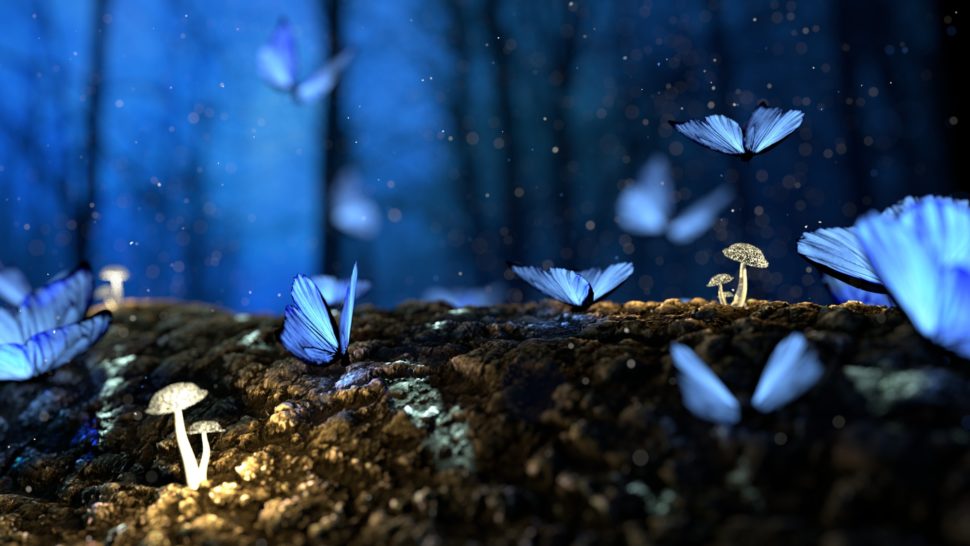In the words of the immortal Carl Sagan:
“Extinction is the rule. Survival is the exception.”
The class insecta, which encompasses all insect species on earth, make up about 90 percent of all life forms. Though entomologists have described over one million insect species, they estimate the number to be closer to 10 million. With such a massive number, estimating the actual insect population is a challenging task.
There could be as many as 10 quintillion, (ten billion billion) individual insects alive at any given time.
The incredible biomass of insects, the diversity of their species, and their widespread distribution makes it hard to think they would be someday all wiped off the planet.
Yet, this isn’t a speculative scenario. According to a meta-analysis of dozens of studies, a large-scale insect decline could happen just a few decades from now.
Insects Armageddon
Our world is a complex system of lifeforms that all depend on one another to thrive. In the case of insects, this is especially true. Following the mass upheavals in our environment in the past century, scientists have been reporting the increasing decline in both insects’ diversity and biomass in recent years.
A 2017 study revealed that between 1976 and 2013, the biomass of arthropods fell by 10-60 times in the rainforests of Puerto Rico. But the latest report on insect decline, however, is the most alarming yet.
Researchers Francisco Sánchez-Bayo (University of Sydney) and Kris Wyckhuys (University of Queensland) conducted a review of 73 studies that looked into insect decline in the world.
Their work shows that over 40 percent of all insect species in the world could go extinct within a few decades.
Read More: New Model Suggests Next Mass Extinction Event Beginning in 2100
According to the researchers, the disappearance of insects from the surface of the world threatens the “catastrophic collapse of nature’s ecosystems,”.
On land, researchers say that three insect groups are the most affected:
Lepidoptera, the order that includes butterflies and moths, with about 180,000 described species. The Hymenoptera order that encompasses over 150,000 species including ants and bees. And dung beetles in the Coleoptera order.
Extinction is also threatening four major aquatic insect species:
The Plecoptera order, or stoneflies (3,500 species ), Odonata (to which belong the dragonflies), Trichoptera (with 14,500 described species), and Ephemeroptera (mayflies).
If Insects Go, We Go
Researchers list four main drivers of this dramatic decline in insect species:
1- Habitat loss due to intensive urbanization and the conversion of lands to agriculture.
2- Pollution, mainly that caused by synthetic pesticides and fertilizers.
3- Biological factors, like pathogens.
4- Climate change.
Unlike other mass exctinctions the world has seen throughout its history, this one will be due to one species — us.
As to how we can save insects, the pair authors of the study recommend:
“A rethinking of current agricultural practices, in particular a serious reduction in pesticide usage and its substitution with more sustainable, ecologically-based practices, is urgently needed to slow or reverse current trends, allow the recovery of declining insect populations and safeguard the vital ecosystem services they provide. In addition, effective remediation technologies should be applied to clean polluted waters in both agricultural and urban environments.”
Read More: Beyond Veganism: The Rise of Antispecism
If insects go, they take other animals with them, and that’s a major problem in maintaining a world we can all live in.
In the animal food chain, insects are the base that allows all other animal species to survive. Even humans indirectly depend on insects to live.
Insects play a crucial role in plant pollination and the nutrient cycle.
Some argue that the extinction of species isn’t that life-threatening to humans.
Michael Levin, teacher of philosophy at City College of New York, said in “Animals and the Market” that “The very fact that a species is near extinction implies that its final demise will have negligible impact.”
However, in this case, we’re not speaking of your average “niche” extinction where only one or two insect species would go.
It is yet to be seen how this will affect our world, but major action by governments and corporations is desperately needed if humanity and life on Earth are to survive the next few decades.



















Comments (0)
Most Recent